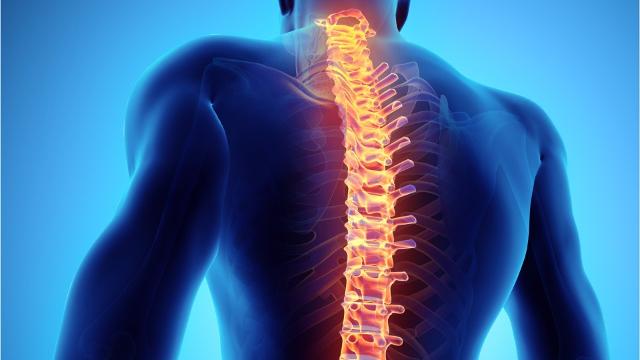News
Stem Cell Therapy May Be The Cure For Spinal Cord Injury
06/06/2018
A stem cell treatment which is in primary stages of trials, has proved effective in treatment of spinal cord injury when using non-donor stem cells.
Spinal cord injuries can happen to anyone, the condition tends to be a result of a fall or accident, although it can also be an outcome of a brain injury.When the spinal cord is injured the pathway is practically closed. Nerve impulses can’t get through, this has problematic symptoms such as; a person suffering paralysis, a loss of mobility and sensation.
Using stem cell therapy where the stem cells haven’t been donated mean they are more likely to be accepted by the patient when they are injected.
This new trial was published on the 9th of May 2018 in Science Translational Medicine, a team of international scientist led by the University of California San Diego School of Medicine successfully grafted stem cells back into a spinal cord without aggravating the immune system or reducing it in any way.
The stem cells injected in the trial were accepted and survived long term without causing a tumour. Researchers also found that the same cells showed a long-term survival when injected into an injured spinal cord.
Senior author Martin Marsala, MD, professor in the Department of Anesthesiology at UC San Diego School of Medicine and a member of the Sanford Consortium for Regenerative Medicine, said: “The promise of iPSCs is huge, but so too have been the challenges. In this study, we’ve demonstrated an alternate approach,”
“We took skin cells, then induced them to become neural precursor cells (NPCs), destined to become nerve cells. Because they are syngeneic—genetically identical with the cell-graft—they are immunologically compatible. They grow and differentiate with no immunosuppression required.”
Co-author Samuel Pfaff, PhD, professor and Howard Hughes Medical Institute Investigator at Salk Institute for Biological Studies, said: “Using RNA sequencing and innovative bioinformatic method to deconvolute the RNA’s species-of-origin, the research team demonstrated that iPSC-derived neural precursors safely acquire the genetic characteristics of mature CNS tissue.”
In their study, researchers found that the stem cells survived and differentiated into neurons and supporting glial cells. The grafted stem cells were detected to be working and responsive seven months after transplantation.
Researchers, then grafted stem cells into similar tissues in the body that had severe spinal cord injuries, this injection of stem cells was then followed by a transient four-week course of drugs that suppress the immune system. The stem cells then could work in the spinal cord and begin to allow movement.

“Our current experiments are focusing on generation and testing of clinical grade human iPSCs, which is the ultimate source of cells to be used in future clinical trials for treatment of spinal cord and central nervous system injuries in a syngeneic or allogeneic setting,” said Marsala.
“Because long-term post-grafting periods—one to two years—are required to achieve a full grafted cells-induced treatment effect, the elimination of immunosuppressive treatment will substantially increase our chances in achieving more robust functional improvement in spinal trauma patients receiving iPSC-derived NPCs.”
“In our current clinical cell-replacement trials, immunosuppression is required to achieve the survival of allogeneic cell grafts. The elimination of immunosuppression requirement by using syngeneic cell grafts would represent a major step forward” said co-author Joseph Ciacci, MD, a neurosurgeon at UC San Diego Health and professor of surgery at UC San Diego School of Medicine.
The treatment is expected to go to the next stage of trials in the next few years, with the hope that this stem cell therapy can be used in modern medicine.
This research forms another significant step towards stem cell therapy and spinal cord injury. Yet the type of cell used is still in contention when it come to human application. iPSC are undoubtedly a useful research tool in the laboratory and as a result because of their pluripotency, many scientists continue to hope that they can one day be used for therapeutic applications, including regenerative medicine in humans. This strategy continues to prove problematic as have been shown to produce lesions and tumours when injected or transplanted.
This type of research does however contribute to on going developments for the use of stem cells, where possible use of Adult Stem Cells, known not to be problematic as a result of tumours could be used.
Protect Their Future Health
We believe the best stem cells to use in emerging treatments will be the patient’s own stem cells as this doesn’t require a search for a suitable donor and in turn, eliminates chances of the transplanted cells being rejected.
If you want more information on how you can protect your child’s future health by banking their cells, get in touch with our friendly team today or order your free information pack.
